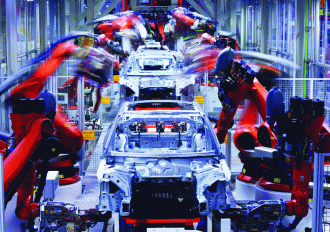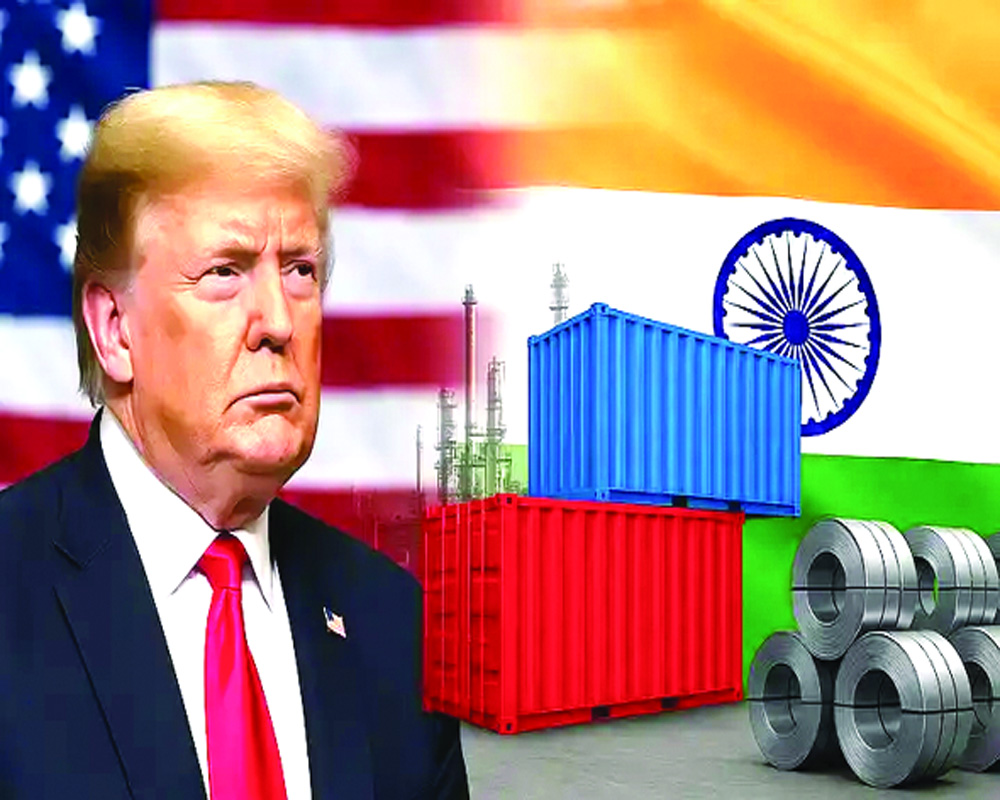Economic liberalisation and the abolition of license raj scripted the success story of Indian automotive industry.
In recent times, ‘Make in India’ for the automotive sector has caught the imagination of the world. However, a look at the past will enrich all by the captivating journey of the automotive industry that began a long time ago. Before the economic liberalisation, before the licensing raj, even before India attained Independence. It started when M Visvesvaraya, an Indian engineer and renowned statesman, envisioned an indigenous automotive industry in India. His vision was transformed into a detailed proposal for the then Central Government and presented in the 1930s.
The proposal did not find acceptance in the Government; nonetheless Indian industrialists saw merit in it and established Hindustan Motors and Premier Automobiles in 1942 and 1944, respectively. Bajaj Auto came into existence in 1944 initially by selling imported two and three-wheelers in India. The foundation of Bajaj Tempo originated from Bajaj Auto. They started assembling three-wheeled Tempo auto rickshaws and small trucks in 1951, under licence from Germany. In 1958, the companies announced the creation of a joint venture called Bajaj Tempo Motors.
General Motors and Ford were the first companies to start assembling vehicles in pre-independent India. However, in 1953, the Indian Government introduced a policy that allowed only units with a plan for progressive manufacture of components and complete vehicles to operate in the country. This led to the exit of General Motors and Ford from India. Nonetheless, the policy saw many Indian entrepreneurs committing themselves to developing an automotive industry in India.
Ashok Leyland, Standard Motor Products entered in the commercial vehicle space, while Mahindra & Mahindra invested in Utility Vehicle manufacturing in the country. This was followed by Tata Engineering & Locomotive Company (TELCO) in commercial vehicle segment, which increased the strength of indigenous automobile industry in India. In the two-wheeler space, Enfield India entered with a plan to manufacture motorcycles. Bajaj Tempo, established in 1958, started assembling three-wheeled Tempo auto rickshaws and small trucks.
In the 1970s, the Government had a focus on encouraging development of the two-wheeler segment that would have catered to the mobility requirement of the growing middle-class population, which led to the entry of the State-owned Scooters India and Kinetic Engineering in the two-wheeler segment in 1972.
In the 1980s, there was an ease of restrictive rules and licensing controls that governed the industrial sector. Relaxations were made with regard to regulations that existed on capacity licensing and foreign collaborations, imports of capital goods, technology and raw-materials. During this period, several Japanese two-wheeler manufacturers entered India through joint ventures.
Bajaj-Kawasaki, Hero-Honda, TVS-Suzuki and Escorts-Yamaha started production of motorcycles with 100 cc engine capacity models. In light commercial vehicles, the entry of Eicher Mitsubishi, Allwyn Nissan, Swaraj Mazda, DCM Toyota also made a significant contribution to the development of the industry. Maruti Udyog Ltd entered into collaboration with Suzuki in 1982 and established a manufacturing unit for passenger vehicles.
Easing of restrictive rules also led to considerable growth in the auto components segment. The entry of foreign manufacturers in the automobile segment led to the emergence of diverse product designs which required auto component manufacturers to invest in technological upgrades to cater to the changing demands. Consequently, many domestic manufacturers collaborated with foreign players in the auto component space.
Moreover, the entry of foreign manufacturers in vehicles manufacturing was followed by entry of their vendors into the Indian market through collaborations with domestic players. The entry of the foreign players not only brought technology but also the best practices of automotive manufacturing. These steps were a precursor to the economic liberalisation of 1991.
The end of the licence raj and economic liberalisation were milestones towards easing up policies for the growth of the automotive industry in the country. The focus of the new industrial policy was to create a competitive environment in the automobile sector and remove the barriers to entry and growth of industry.
As automotive components and complete knock downs (CKD) were under quantitative restrictions, the Government allowed import of such items against a Memorandum of Understanding (MoU) to fulfill certain conditions including localisation and foreign exchange neutralisation. The liberalisation led to the entry of foreign players into the Indian market — some through partnerships, some directly. The likes of General Motors, Ford, Daewoo, Hyundai, Honda Motors, Toyota, FIAT, Mercedes Benz, Tatra and Volvo entered the market.
The next milestone for the industry was the introduction of the auto policy by the Ministry of Heavy Industry in 2002. The vision of the auto policy was to establish a globally competitive automotive industry in India and double its contribution to the economy by 2010. Its focus was to promote modernisation and enhance design and development of vehicles within the country as well as establish domestic safety and environmental standards at par with the international ones. It defined a target of making India a manufacturing hub for small cars, two-wheelers and tractors. Auto Policy 2002 allowed automatic approval of foreign equity investment upto 100 per cent for the manufacture of automobiles and auto-components. At the same time, taxes on vehicles across segment were brought down allowing prices for vehicles to reduce.
Another development that gave right policy direction to the automotive industry was the introduction of the supportive trade policy environment by the Government, which aimed to make India a vehicle and component manufacturing hub by encouraging investments in the sector through an open Foreign Direct Investment (FDI) policy, tiered import duty structure, with low duty for components/parts, higher for CKD and semi knocked down (SKD), and very high for completely built vehicle (CBU) imports and highest for used vehicles.
The very high tariff policy makes import of vehicles difficult and uncompetitive in the Indian market, especially commuter vehicles, which prompted global vehicle makers setting manufacturing plants in India to access the huge and growing automobile market in India. This policy has played and is still playing a stellar role in India’s “Make in India” ambition.
The Automotive Mission Plan 2006-2016 (AMP 2006-16) was a step to implement the recommendations of the Auto Policy, 2002. It had set growth targets for the automotive industry and recommended interventions to make India a global automotive hub. The AMP 2006-16 was successfully concluded. The success of AMP 2006-16 led the industry and the Government to jointly work on the next collective vision for the Indian automotive industry — AMP 2016-26. Automotive industry has come a long way. From producing mere 4,000 units of vehicles in 1950 to producing 29 million vehicles in 2017-18, more than four million passenger cars and 23 million two-wheelers were produced last year. More than 8,50,000 commercial vehicles and one million three-wheelers were made.
The industry today contributes to more than seven per cent of the country’s GDP. It is half of the manufacturing sector and supports jobs for 32 million people. Vehicles produced in India are not just catering to the domestic demand, a large share of those produced here are exported to over 150 countries across the globe. ‘Make in India’ for the automotive industry has been possible due to Indian entrepreneurs, who took the dive and the technology infusion from foreign companies, and successfully made India a manufacturing hub. The focus of the Government on local value addition and employment through judicious trade and investment policy has steered indigenisation of the auto industry with both Indian and foreign companies contributing to the development.
The phased manner in which the licence raj was abolished, restrictive rules were curtailed and the economy was liberalised, has played a distinct role in the emergence of the Indian automotive industry as one of the most successful stories of industrial development in India.
Writer: Sugato Sen
Courtesy: The Pioneer








 OpinionExpress.In
OpinionExpress.In















Comments (0)